Blog •
Last updated on Apr 30, 2021
How to Become a Children’s Book Illustrator in 5 Simple Steps
Martin Cavannagh
Head of Content at Reedsy, Martin has spent over eight years helping writers turn their ambitions into reality. As a voice in the indie publishing space, he has written for a number of outlets and spoken at conferences, including the 2024 Writers Summit at the London Book Fair.
View profile →This article was written in collaboration with professional children’s book illustrators Leo Hartas, Siski Kalla, Natalia Junqueira, and Caitlin B. Alexander.
If you want to become a children's book illustrator, creating books that capture the imagination of children and parents alike, you'll need to first develop your artistic skills and unique style, then build a strong portfolio to show to clients, pick up freelance work, and network with people in the industry to find opportunities. A formal art degree can give you a head start, but it's not a requirement; many illustrators find success through online courses or workshops, and the best way to sharpen your brush strokes is by experimenting.
If you have a strong creative spirit and love letting your creativity (and pen) run loose, in this post we explain how to become a children’s book illustrator in five simple steps, with insights from real-life experts. And we begin with a simple question…
What does a children’s book illustrator do?
Children’s book illustrators design pictures and artwork that not only add visual accompaniment to a story but also help children better understand what they’re reading. Generally, they work as freelancers, although some will sign contracts with publishing houses or develop relationships with specific authors — or even write the books they’re illustrating themselves.
Regardless of how they’re employed, a children’s book illustrator’s job is to create meaningful images that bring a children’s book to life. And as opposed to other types of illustrations, when illustrating for children, specifically, Caitlin B. Alexander, a professional illustrator here at Reedsy, notes that there are a few things you need to keep in mind:
"One of the key things to remember while working on a picture book is the visual storytelling rhythm. I spend time with my authors considering which spreads should be full bleed (illustrated from edge to edge) and which should be little breaks, with just a small spot and mostly white. This pacing is really important for the experience of reading the book out loud, and the child immersing themselves in the world of the picture book."

Technically speaking, you also need to consider not only the illustration but the overall composition, says Natalia Junqueira:
"Where the text will go, whether there is enough space for the paragraph, whether the background will impact the text's readability, and whether a part of the illustration will get cropped by the gutter or bleed margins. If you want to specialize in book illustration, it's essential to understand how the book's structure and formatting work, as you're not only creating an illustration but a fundamental piece of the book's interior."
Q: How do you balance creativity with the technical requirements of book illustration, like text placement and bleed margins?
Suggested answer
Once the size of the book is decided, I draw the margins on my canvas and make sure I mark where the middle of the page is, especially when working on spread illustrations. Depending on the amount of text on the page, I decide where it should be placed (sometimes in more than one spot). The rest of the space is free for play!
Charlotte is available to hire on Reedsy ⏺
For me, every book starts with a complete rough layout. I will draw out the entire book in rough scribbly lines. This allows me to work quickly on the composition and how the image will work with the text. This also allows me to work out which pages will be full spreads, which will be spots etc. This can take several iterations but once I'm happy I will neaten the roughs so the author can read the layout, then I will send to the author for any notes.
The rough nature of the book at this stage allows for quick edits before committing to final layout. I will then work up one spread to finished art and send to the author so they can get a feel for the style. Once approved I work though all pages.
I make sure to work at full bleed size of the book, usually 3mm bigger than the agreed size, then work within a margin of the agreed sizes so Illustrated elements and text are not to close to the edge, or disappearing into the gutter.
Once all the art is complete I will layout the book with text using Indesign or Affinity Publisher and play with the text layout. This will then be exported into the various formats required by the book printers.
Rich is available to hire on Reedsy ⏺
And in addition to keeping the style consistent throughout, no matter what style you use every illustrator must have a strong sense of creativity and a vivid imagination. Children’s book illustrators, in particular, have the license to let their minds run free.
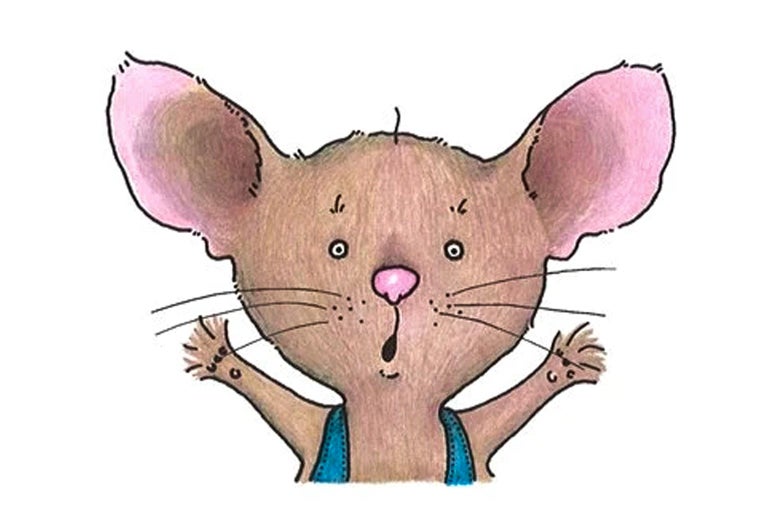
Just think of Felicia Bond, the illustrator for the famous If You Give a Mouse a Cookie, and other books in the series! Working with very few lines of text, Felicia crafted creative and expressive images like the one above that brought the stories to life and helped make the book (and series) a contemporary classic.
💰 How much do children’s book illustrators make?
According to Glassdoor.com, the estimated pay for illustrators in the US in 2023 is around $61k. This number obviously changes based on an illustrator’s experience, skills, and portfolio.
It’s also important to note that a majority of children’s book illustrators are freelancers, which can make the pay range vary even more. But that means that highly-skilled and more successful illustrators can command even higher pay for their services!
But remember: it takes time and dedication to really succeed in the world of illustration.
The industry has become increasingly competitive over the past few years, as children’s book publishing has boomed. And while it may seem easy to spend every day drawing and coloring, children’s book illustration also involves close reading, frequent revision, and lots of trial-and-error. It takes constant effort and true dedication to your craft and to daily improvement. It’s certainly fulfilling if you love to illustrate, but don’t expect it to be easy.
If you set your mind to it, you can become an illustrator and share storytelling magic with the next generation of young readers (while getting paid for it). Let’s talk now about how to become a children’s book illustrator and set yourself up for success in illustration.
How to become a children’s book illustrator in 5 steps
Figuring out your first steps can be overwhelming, regardless of what industry you’re trying to enter. So, we’ve compiled a five step path you can follow to set yourself up for success!
1. Understand your market
In order to become a successful children’s book illustrator, it’s good practice to understand why successful illustrators are as successful as they are, as well as what audiences are looking for in the market. The best way to learn about your future niche? Research.
As a starter kit, you should know that children’s fiction tends to be broken down into five main categories:
| Book Genre | Reader Age | Number of Words |
| Picture Books | < 5 years | < 1,000 |
| Early Readers | > 5 years | 2,000–5,000 |
| Chapter Books | 6–9 years | 5,000–10,000 |
| Middle Grade (MG) | 8–12 years | 30,000–50,000 |
| Young Adult (YA) | 12–18 years | 50,000–100,000 |
Depending on the style of art you prefer to create, the stories you like to read, and the time you have, you could be illustrating for entirely different audiences. According to illustrator Leo Hartas, it’s critical to know your niche before you enter the market. “There are several aspects to keep in mind when illustrating books for children, not least of which are the target age group, book size and format, character's age, background, and so on.”
“Beyond these demographic aspects, you can also choose to focus on things such as expressing the emotion of the scene through gestures and body language children will understand,” Leo continues.
Siski Kalla also adds that while “children's books need relatable and consistent characters, you also need character diversity, a varied composition in spreads to add drama, as well as good pacing” that keeps children immersed in the story. She also reminds authors to keep the parents in mind. “They're the ones buying the book, after all. So a knock-out cover is key!”

Find inspiration
Spend some time looking at popular children’s books like My Footprints, illustrated by Basia Tran, or any children’s book that captures your attention. What about these books grabs your eye, whether it's the cover design or the style? What did the illustrator do that was so effective?
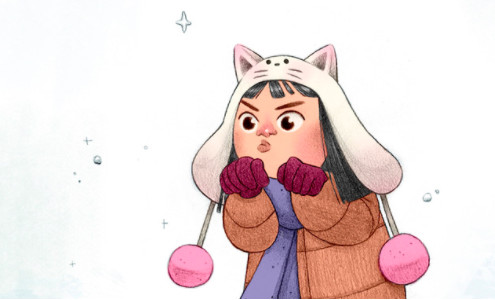
If you’re not sure where to start your research, you can reach out to your local libraries and elementary schools, or visit your local bookstore to get some inspiration. What are local kids reading? What books are flying off the shelves? Read as much as you can — it’ll help you understand your market’s audience, as well as what elements of successful illustration in children’s books appeal to you. The more you know about the audience and field you’re trying to reach, the better.
Siski, for instance, loves illustrators who give their characters great expressions, loose lively lines, and movement, pointing to Janet & Allan Ahlberg’s The Jolly Postman, Margaret Bloy Graham’s Harry the Dirty Dog, Emily Gravett’s Meerkat Mail, and Helen Stephen’s How to Hide a Lion, as examples:
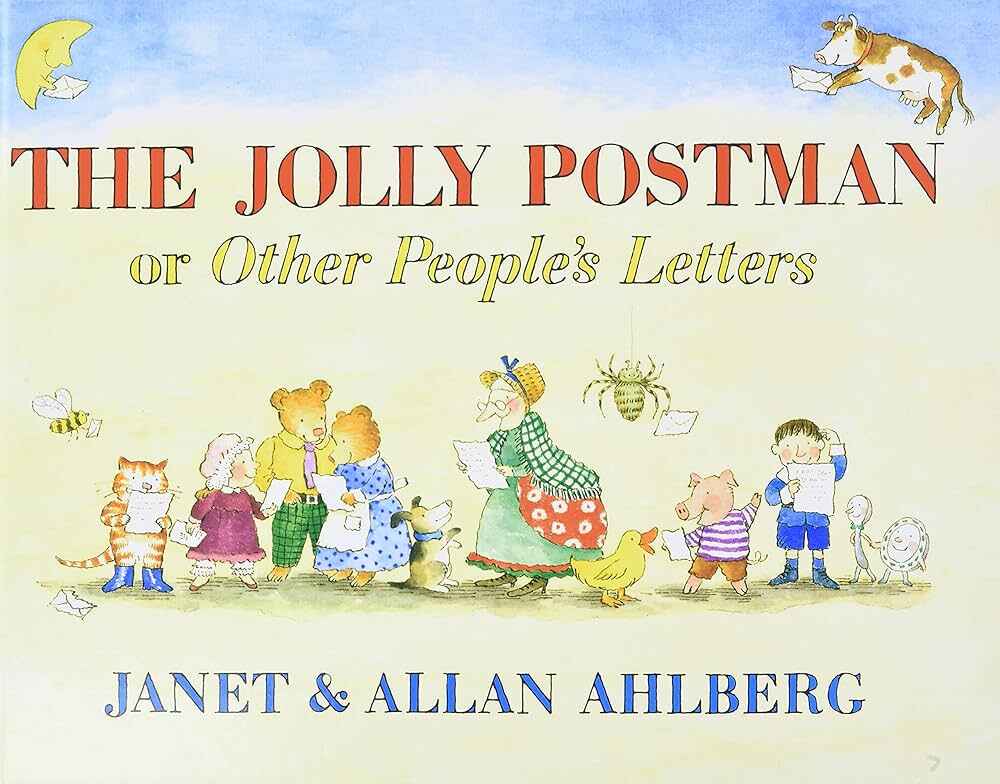
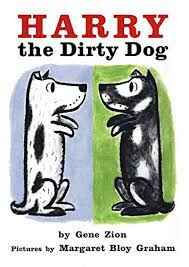
Meanwhile, Caitlin holds a special place in her heart for the whimsy style of Maurice Sendak. Among her contemporaries, she finds the work of Peter Brown, Carson Ellis, and Isabelle Arsenault inspiring for — respectively — the character, the texture, and the different approach to painting subjects.
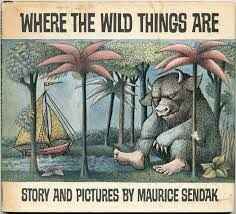

Take some time to familiarize yourself with the various types of children’s book illustration styles out there. And keep in mind that different artists will invariably work with different tools, ranging from watercolor painting to Adobe Illustrator or Photoshop. Furthermore, each artist will often have his or her own unique, personal style to set them apart from their peers, which brings us to our second step…
2. Master your personal style
Your personal style is what will set you apart from other illustrators on the market, says Natalia Junqueira. “It can take a lot of time and effort to develop. It requires you to both absorb as many references as possible and reflect upon what you enjoy (or don’t enjoy) about other people’s work, as well as going out there and putting your own style into practice. There are no shortcuts, nor is there a final destination: your style will always continue to evolve.”
In your quest to become a master children’s book illustrator, you should therefore know which illustration styles are trending in the children’s book market. Here are some examples from prominent children’s book illustrators.
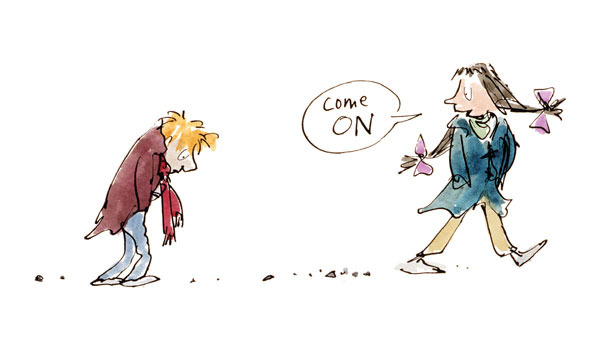
This image is a great example of linework. Quentin Blake, who illustrated many books for Roald Dahl, often used linework to create quirky (and very recognizable) cartoons. You can check out more of his work here.
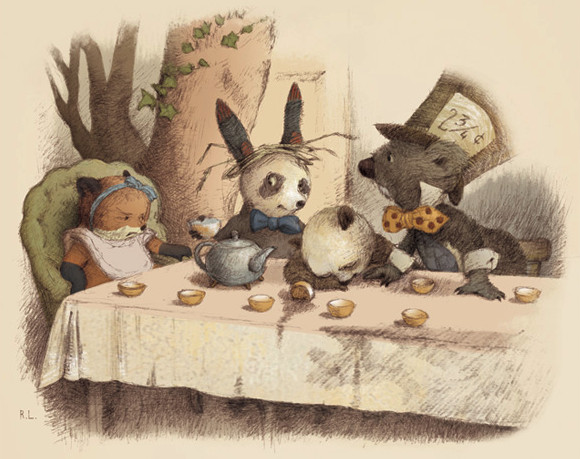
Many children’s book illustrators will use this tried-and-true style of cute, emotive character design and intimate environments. This image by Renata Liwska is simple but humorous, endearing, and soft! You can check out more of her work here.
Want to create your own profile on Reedsy? Check if you meet our professional criteria with this quiz:
💼
Are you ready to join Reedsy?
Find out here! Takes 1 minute
Again, research is key. Embrace the artists who inspire you and study how they utilize color, shapes, and composition. On top of that, however, notes Siski, you should quickly start developing your own style and aesthetics. What do you enjoy drawing? And what are you interested in designing?
"I've ended up with two quite distinct styles. One is pretty, detailed, and whimsical; the other is bright, bold, and simple. I've found that traditional publishers prefer the bold style, while independent/self-publishing authors prefer the detailed, whimsical style. I've just always painted things the way I'd like to see them in a book and that developed into the style I have now. I think that's important when exploring your style: to draw what you want to see (rather than what others might expect or want), and that way your style ends up coming through."
Ultimately, it’s important that you find a style and medium you both enjoy and are comfortable working in. The process will require some trial and error, and a whole lot of practice. Try different illustration platforms and see which tool feels best in your hand. There are tons of styles and aesthetics out there, including:
- Brush painting
- Watercolor
- Pen and ink
- Digital media
- Acrylic
- Etc.
Draw things you’ve seen before and things you’ve only seen in your dreams. It takes some work to craft, but it’ll be worth it when you can present your own unique style of art. With that said, if you feel limited by the idea of focusing on one specific style, it is certainly possible — though much more difficult — to become a style chameleon, says Leo Hartas. "I work in several styles, from classic fantasy maps for young adults to young children's picture books, depending on what's required. I have worried about not having a single recognizable style as the advice is often to build a fixed style, but on the other hand it allows me to accept a wide variety of work which is a fun challenge!”
Q: How did you develop your personal illustration style, and how has it evolved over time?
Suggested answer
The question of style in Illustration is always a tricky one. Is it best to have a range of styles, or just one? Do I adjust my style to reflect trends in Illustration? Personally, my style today developed from years of experimentation. I started with fine art in sixth form, hand drawn realistic style work, then moved to print making in college and then a mix of both in early university years before combining hand drawn, painted and printed elements with digital techniques.
I would scan in scraps from the print room floor and mix this with scanned drawings to create a kind of digital collage. From there this process has evolved to be all digital. My work still maintains a painterly feel and is still all drawn and painted by hand, just using a digital paintbrush. With so much AI art around, it's important to maintain a personal style, one that's distinct to you. This really helps sell books for authors on Amazon, there are so many AI generated books for sale and they all look the same.
Rich is available to hire on Reedsy ⏺
Check out this interview with Reedsy illustrator Caitlin B. Alexander to learn how she developed her style and continues to grow in her craft.
3. Get your artwork seen
If you want to get noticed for your children’s book illustrations, you need to set up your own portfolio. This representative display of your work will be crucial when it comes to landing jobs — as opposed to a CV which lists your degrees and achievements. It will often be the first thing in the hands of the publishers or authors looking to hire you, so you need to put your best foot forward.
🎨 Do you need an art degree to become a professional illustrator? When asked, Reedsy professionals note that a degree is never strictly necessary to become a successful illustrator, though taking courses can be helpful in building your technical and theoretical foundations. Siski Kalla recommends Lilla Rogers and the School of Visual Storytelling, for instance, to dive into what makes children's book art different, as well as character creation, pacing, composition, color palettes, and so on. But, ultimately, if you can demonstrate your abilities in a portfolio, your future clients are unlikely to ask for your credentials. It is entirely possible for self-taught artists to produce top-quality work.
To create a portfolio, you should set up a website or blog where you can showcase your best professional work as well as your unique aesthetic. There are many ways to do so. We recommend looking into the following website editors to find the platform that you enjoy best:
- Squarespace is a popular option for beginning illustrators because of its great templates, usability, and support.
- Wix is accessible and easy to use.
- Webflow allows you to build an immersive website without coding.
Alternatively, you could always seek out website design services from professional web designers. These professionals can build you a unique website straight from scratch that you can then take up and maintain as your career grows.
If you wish to be hired directly by authors and meet the selection criteria, you can also set up an account here on Reedsy, displaying your artwork in a portfolio directly on your profile, without having to bother with a website.

JOIN OUR NETWORK
Supercharge your freelance career
Find projects, set your own rates, and get free resources for growing your business.
Populate your portfolio
Once you've sat down and determined how you're going to build your portfolio, make sure to include the art that best represents your tastes, skills, and experience. In three words, you need to build your brand. Take a look at Amy Rosenthal, illustrator of Duck! Rabbit!, and her awesome on-site portfolio.
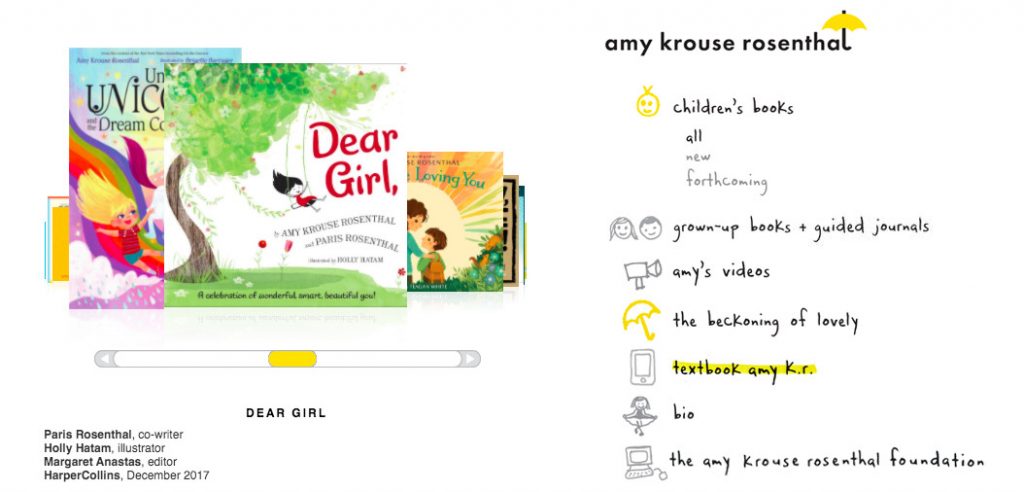
In illustration, where a lot of work is freelance and set up on a case-by-case basis, it’s essential that you have a portfolio that models the work you’ve done and can do. Your portfolio is basically a resume and interview rolled into one. The better your portfolio, the higher a chance you have at convincing publishers or authors that you’re the one for the job!
Here are four pieces of advice from our professionals:
1. Only include the type of work you want to do
Just because you have illustrated cars before, Caitlin says, doesn’t mean that you should include it in your portfolio if you don’t enjoy working on it. “Whatever you advertise in your portfolio is what people will be hiring you for.”
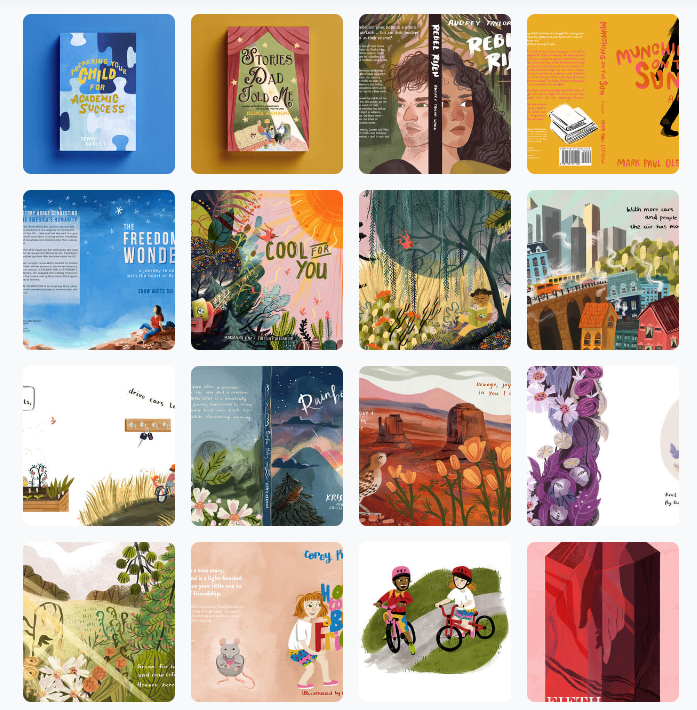
2. Include multiple scenes from one story
Another good practice to keep in mind if you want to gain book illustration projects, specifically, Siski adds, is to “ensure your portfolio has two or three scenes from a story with the same character(s) and different emotions or settings, so that it's clear you know how to tell a story and can produce consistent characters.”

3. Keep it short
Leo’s advice (which he admits he doesn’t always follow himself!) is to keep the portfolio to 20 or so pieces. Curating your portfolio in this way will keep it clear and consistent, and also encourage you to update it frequently to make sure it represents where you are currently as an artist.
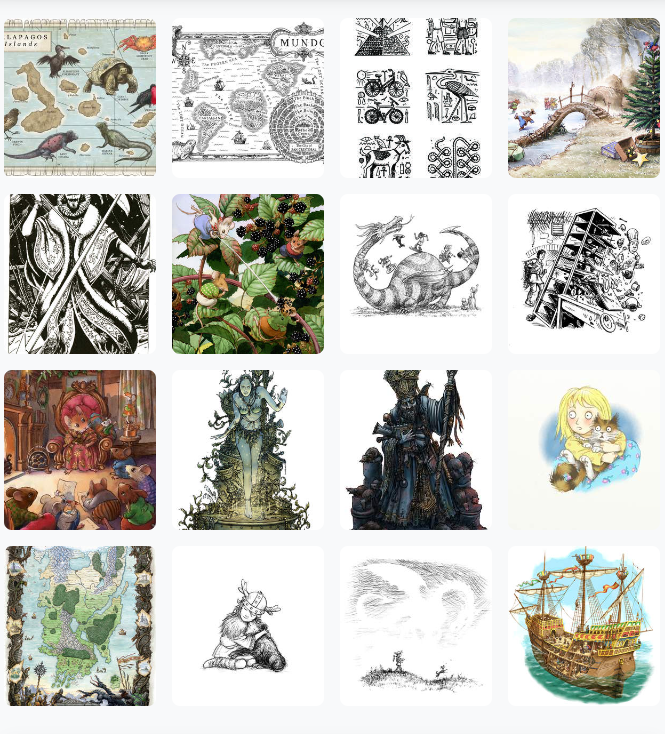
4. Experiment with fan art
If you are a fledgling artist who has not received any commissioned work yet, Natalia advice is to take the opportunity and draw what you love to build your portfolio. Fan art can be helpful here, as authors will recognize the characters and narratives, giving you both a common point of reference.
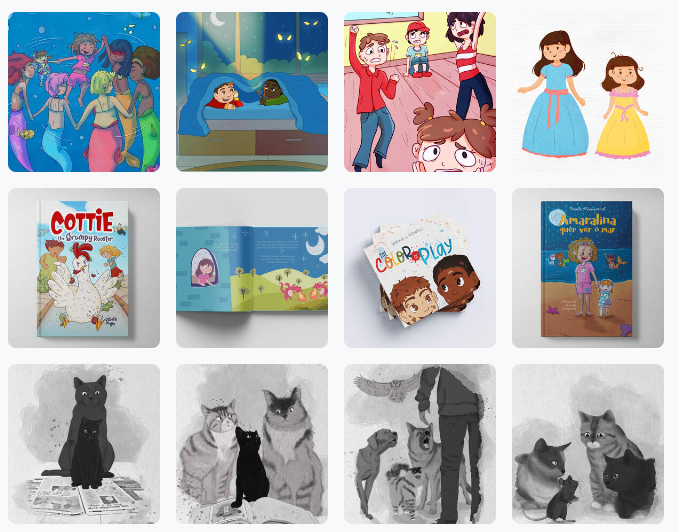
Get noticed
To get noticed by the right people, Caitlin notes that you want to “walk that fine line between having something unique to offer stylistically while still being able to capture your intended audience.”
Once you have your portfolio set up, continue building your presence. Set up an Instagram, for instance, and start putting up snippets of your art, brief sketches, or whatever you feel comfortable sharing with your audience.
💡Top tip: Another piece of advice Siski shares is to put 'children's illustrator' in all your social media descriptions, as well as your website if you have one.
Leo suggests that you can also go down the old school route. “Find the names of art directors and editors you would like to work with and send them physical prints, postcards, calendars, etc. The online world is saturated and I imagine that such people may well respond to something tangible arriving in the post. Look for smaller companies, publishers, indie games developers, etc. They may not pay so well or carry so much status, but often working with them is more rewarding and you can build relationships that help you as they move around the industry.”
Your goal is to get your artwork in front of as many eyes as possible, and you can only do that by being proactive about your career, whether on- or offline. Once you build a following and start engaging with more and more users through your art, you’ll also show clients that there is a proven market for your work.
4. Build out your network
Speaking of proactivity, it’s never too early to start building out your network of publishing connections. You never know when an acquaintance might link you to your next big project or gig! Here are some places to start.
Check out the Children’s Writer’s & Illustrator’s Market book
This book is the definitive guide to the world of publishing, whether you’re a writer or an illustrator. It gets refreshed every year with up-to-date information that will give you a leg up in the world of illustration. That includes awesome resources such as publisher listings, contests, agent contact information, and even business articles for freelance housekeeping.
If you’re new to the business, this book will get you on the right track and will serve as a fantastic resource for your job search well into your career too.
Join the Society of Children’s Book Writers and Illustrators
SCBWI is another great source of information and resources for aspiring children’s book illustrators. The society schedules frequent professional development programming for its members. At these events, you can meet and consult award-winning authors and publishing professionals, attend workshops, and even receive consultations for your art.
On top of that, the SCBWI also curates an online illustrator gallery where you can feature your online portfolio (a great way to be seen by publishers and prospective authors!). Siski had a positive experience with it. “SCBWI is brilliant. I've learned so much from other authors, illustrators, publishers, agents on their forums and from the newsletter. If you can attend events, even better. You'll come out with vastly more knowledge.”
Association of Illustrators
The AOI is an association that does what it says on the tin: provides a space for illustrators to come together for networking, resources, and learning. And while Leo notes that it may not help you get more commissions, it might still be an option for the community it provides.
Sign up for a talent marketplace
One of the most important things to know is where to find picture book illustration projects. Talent platforms like Reedsy, which caters specifically to publishing, are great places to showcase your skills to a community of authors and gain the experience you need to flesh out your portfolio. Reedsy, in particular, puts you in front of hundreds of thousands of aspiring authors, many of whom will be looking to you for their illustration needs.
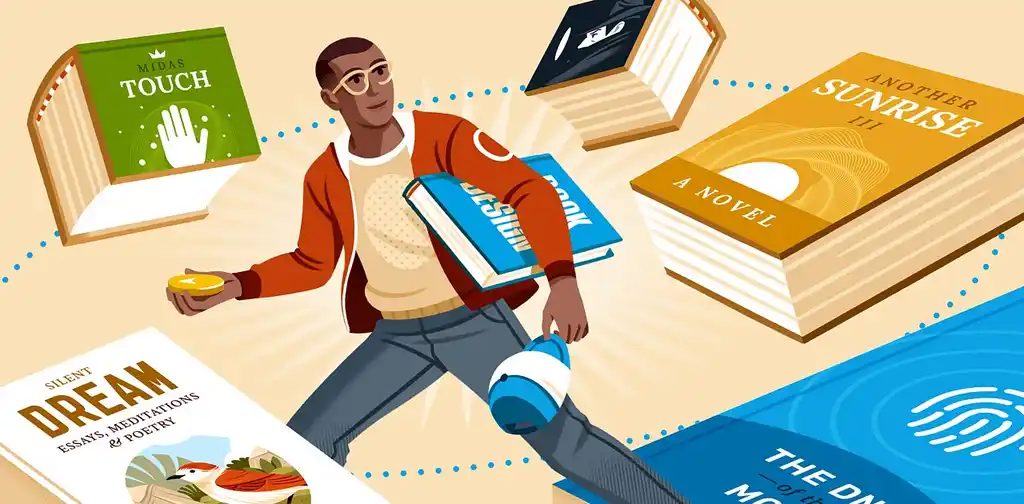
JOIN REEDSY
Find exciting new projects
We connect publishing professionals with our community of 1,500,000 authors.
5. Keep developing your portfolio
As your career builds up and you take on your first, your second, or your fifth project, it can be easy to get complacent and settle into your projects. But make sure that you don’t forget about your portfolio! Keep adding to it, keep building it out, and keep it updated at all times. Your portfolio is your front cover to the entire publishing industry. You want to put your best foot forward at all times, because you may never know when the next big gig is right around the corner.
Children’s book illustration can seem simple on the face of it, but it’ll take work, dedication, and a whole lot of practice to be successful. But if you truly want to work as an illustrator, and you put in the daily hours and the trial-and-error, you can make a name for yourself in the industry. And finally, you’ll be able to find freelance illustration jobs from talented authors from all over the world who can’t wait for you to help them with their publishing journey.
Most of all, children’s book illustration is unique in that it is education-agnostic. So, as long as you are creative and can tell an amazing story through art, it doesn't matter where you got your degree or learned your skillset.
And if you keep at it, you’ll be sharing your imagination with thousands of kids worldwide before you know it.
Reviewed by Linnea Gradin
The editor-in-chief of the Reedsy Freelancer blog, Linnea is a writer and marketer with a degree from the University of Cambridge. Her focus is to provide aspiring editors and book designers with the resources to further their careers.
As the editor of Reedsy’s freelancer blog and a writer on the Reedsy team, Linnea has her hand in a bit of everything, from writing about writing, publishing, and self-publishing, to curating expert content for freelancing professionals. Working together with some of the top talent in the industry, she organizes insightful webinars, and develops resources to make publishing more accessible to writers and (aspiring) publishing professionals alike. When she’s not reading, she can be found dribbling on the football pitch, dabbling in foreign languages, or exploring the local cuisine of whatever country she happens to be in at the time.
